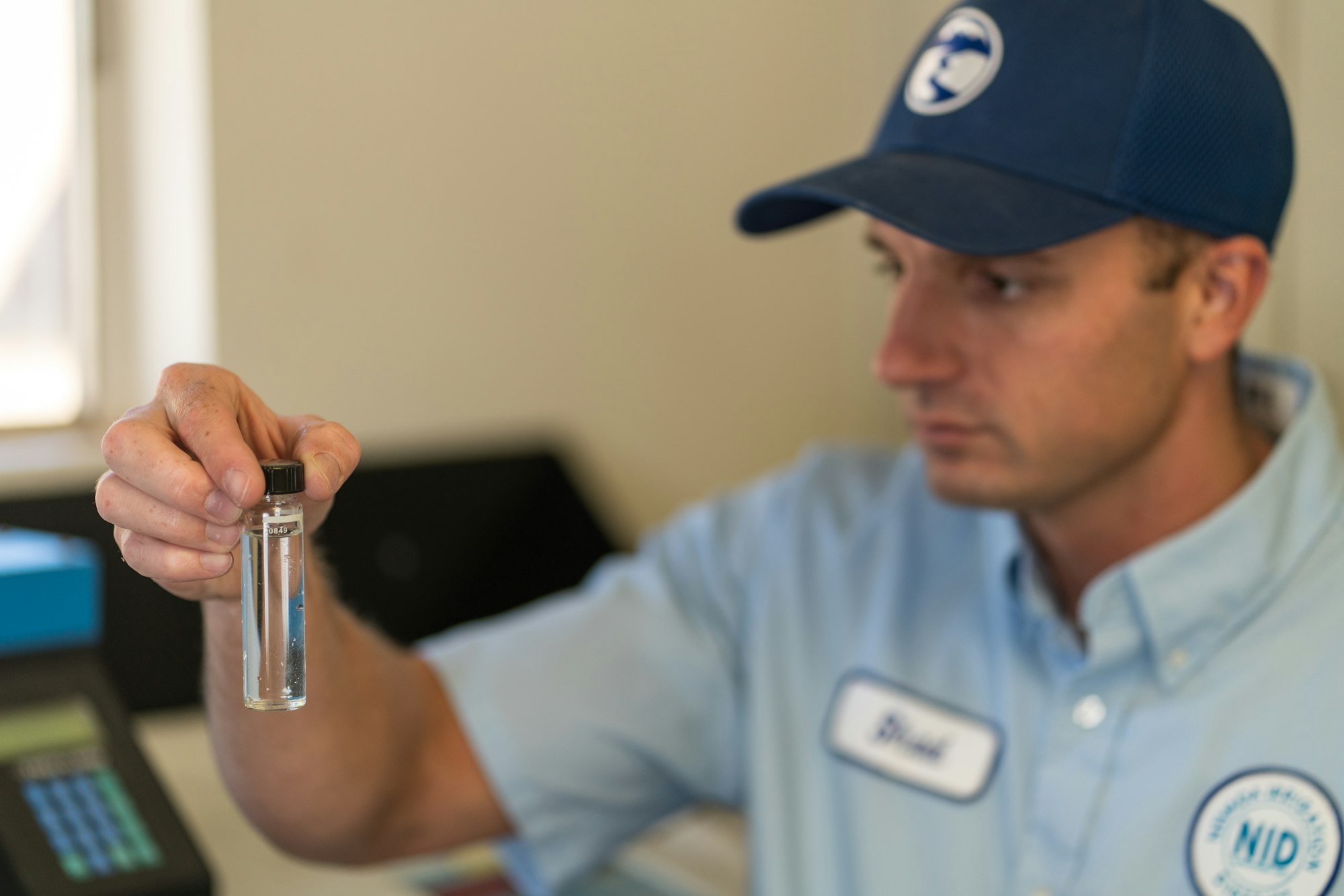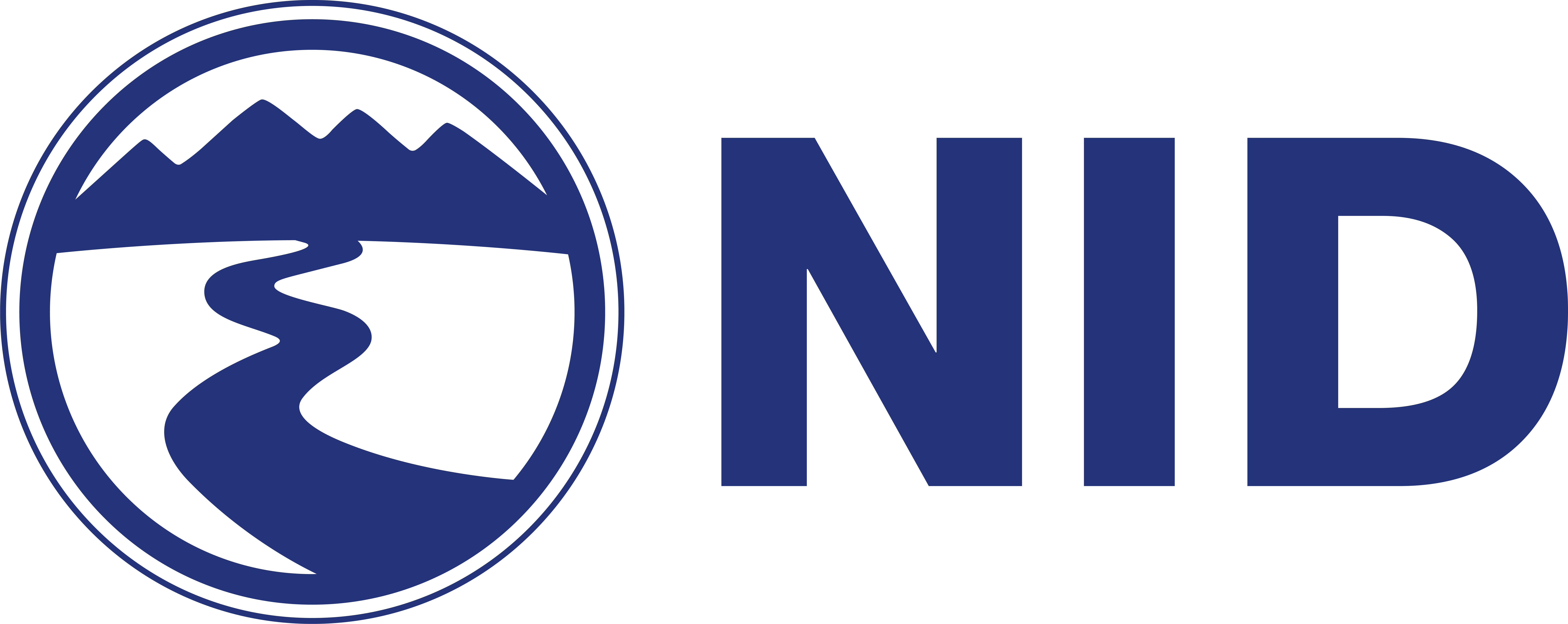NID Drinking Water as pure as its High Sierra Source
Water Quality Report 2024 confirms quality

When the Nevada Irrigation District (NID) was formed in 1921, it was to bring pure Sierra Nevada snowmelt to the foothills, providing water for livestock and irrigation for fields and farms. Canals snaked through the countryside in Nevada, Placer, and Yuba counties to deliver the mountain flows to local ranchers and growers.
From the onset, a popular expression for NID’s irrigation water was “Not Intended to Drink.” Yet, as the region’s population grew and the district expanded, more people were using ditch water as a domestic source, including drinking water.
By the early 1950s, the district was in discussions with state officials regarding public health concerns and needs for filtration and chlorination. Moving beyond an initial solution of injecting chlorine into some ditches, NID developed a formal program to address the need for disinfection, chlorination and filtration of the raw water. The district’s transition into the drinking water business (Now Intended to Drink) had begun.
Today, NID annually treats more than 2.8 billion gallons of water at six state-of-the-art treatment plants. The process to transform pure mountain raw water into quality drinking water is repeated day-in and day-out for over 21,000 customer connections.
NID closely monitors the quality of our drinking water by testing for more than 100 possible substances in our supply on a regular basis.

“We are constantly testing for even trace amounts of contaminants in the water we deliver to our customers,” says NID’s Water Treatment Superintendent Shad Chittock. “All of our tests and efforts are aimed at one goal: to make sure we provide the highest quality water possible and that your water reliably meets or exceeds all the standards for safe drinking water quality set by California and federal regulations.”
Each year, the district publishes a Water Quality Report (WQR) that lists test results for regulated substances at each treatment plant. The latest report has just been released with information about the quality of NID’s drinking water for reporting year 2023.
Click here to read the new report, reporting year 2023.
“NID is pleased to report that the water provided to district customers met or surpassed all State of California and EPA drinking water health standards,” says Chittock. “The constituents we test for are not detected--or detected in only trace amounts--in the water we deliver to you.
Also, the district has participated in the EPA’s Unregulated Contaminant Monitoring Rule (UCMR5) program by performing additional tests, including polyfluoroalkyl substances (PFAS), also known as “forever chemicals” that may be linked to harmful health effects. In April 2024, the EPA issued the first-ever national, legally enforceable drinking water standard to protect communities from exposure to harmful PFAS.
“So far, all tests have shown no PFAS detection,” said Shad Chittock, NID’s Treated Water Superintendent. “We do not anticipate detecting any PFAS considering we are so high up in the watershed and have such high water quality. Typically, PFAS is found where there is industrial runoff.”
The source water is pure
NID is in an ideal location. Water comes directly from the mountain snowpack, and it doesn't carry the trace tastes or odors sometimes found in downstream water supplies. A clear, healthy water supply depends, of course, on more than geography. NID's staff and water treatment technology combine to assure customers that the water they receive meets and exceeds all state and federal public health standards.
It all begins on 70,000 acres of mountain watershed, where melting snow fills district reservoirs. Canals and pipelines that carry water to the foothills are relatively safe from industrial pollutants that can affect raw water.
"We're first in line on the watershed; we have excellent source water," says Chittock, who heads a team of 10 state-licensed water treatment specialists responsible for operating the six water treatment plants.
History of NID treated water
Although NID was formed in 1921 as an irrigation district to supply raw water to fields and farms, in 1952 district officials were discussing treated water with the state after homeowners connected their properties to irrigation ditches and were using untreated ditch water for household use, including as drinking water. It was a matter of public health and safety.
Initially, in 1957 and 1958, NID placed chlorinators on domestic supply stations along the ditch systems. At one point, the district operated 19 chlorination stations, which provided disinfection to water supplied to about 2,000 people in a 75-square-mile area.
Yet, the need for high-quality drinking water became clear with time as the district population continued to increase. By the early 1960s, NID had 3,490 domestic customer connections and 1,238 raw water customer connections. When, in 1966, the state issued a mandate requiring a Treated Water Master Plan as well as plans for financing the work, the district was prepared to respond.
Throughout the 1970s, the district invested $8 million to expand treated water service. NID’s first modern water treatment plant was built on Banner Mountain near Nevada City. Funding for the $1.3 million plant was spearheaded by local business leader Elizabeth L. “Betty” George, who was serving as president of the Sierra Economic Development District (SEDD). The original water treatment plant, named in her honor, was dedicated on May 27, 1970. When it began operation, the plant supplied 2,200 customer connections.
At the same time as the Elizabeth George Water Treatment Plant was coming online, NID was building a second plant off Locksley Lane in North Auburn. George was integral in securing a $1.3 million grant from the SEDD to construct the North Auburn Water Treatment Plant.
By 1980, NID was operating 15 water treatment plants of various sizes to serve its growing and scattered domestic service areas. Later, operations were consolidated to six modern treatment plants, with several interties that provide backup supplies in case of emergency or operational needs.
Treating water to drinking standards

NID treatment plants use a five-phase water treatment process that includes initial disinfection, flocculation, sedimentation, filtration and final disinfection. What is that?
For many years, following its 1921 formation, NID supplied only irrigation water. But in the 1960s and 70s, in response to a changing community, the district expanded into treated water service.
NID Water Treatment Plants include Loma Rica (Grass Valley), Elizabeth L. George (Banner Mountain), Lake Wildwood, Lake of the Pines, North Auburn, and Smartsville.
Before delivery to a home or business, NID water undergoes testing by state-certified water quality operators. The water is monitored 24 hours a day, 7 days a week, to ensure that high-quality water is available. The tests are done with such extraordinary accuracy that they can detect one-hundredth of a part of a substance in a billion parts of water. This is equivalent to finding one drop of a substance in 1.3 million gallons of water.
NID is participating in the EPA’s Unregulated Contaminant Monitoring Rule (UCMR5) program by performing additional tests on our drinking water, including polyfluoroalkyl substances (PFAS). UCMR5 sampling benefits the environment and public health by providing the U.S. EPA with data on the occurrence of contaminants suspected to be in drinking water to determine if it needs to introduce new regulatory standards to improve drinking water quality.
“Protecting our customers’ health and safety is our highest priority, and the Water Quality Reports are our way of being transparent about the quality of the water that our customers are drinking and using every day,” Chittock says.
(Published by Yubanet in June 2024)
